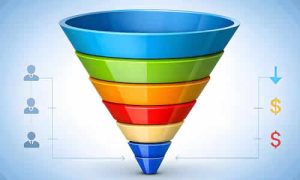In the digital world, where competition is intense and options are vast, data analysis has become an indispensable tool for companies looking to optimize their marketing campaigns. With the ability to collect, measure, and interpret data, businesses can make more informed decisions, ensuring that their actions are effective and targeted. Let’s understand why data analysis is fundamental and how to implement it in your strategies.
What Is Data Analysis?
Data analysis involves the collection and interpretation of information to identify patterns, trends, and insights that can aid in decision-making. This can include sales data, customer behavior, campaign performance, and much more. Through this analysis, companies can understand what works and what doesn’t, allowing for real-time adjustments in their strategies.
Why Is Data Analysis Crucial?
One of the main benefits of data analysis is the ability to personalize. With detailed information about customer behavior and preferences, companies can create tailored campaigns that directly connect with their target audience. This not only increases campaign efficiency but also enhances the customer experience.
Moreover, data analysis allows for resource optimization. By identifying which channels and strategies are yielding the best results, companies can redirect investments to the most promising areas. This means that every dollar invested has a higher chance of return, increasing the campaign’s viability.
How to Implement Data Analysis in Your Campaigns
To start integrating data analysis into your campaigns, follow these practical steps:
- Define Clear Objectives: Before collecting data, it’s essential to have well-defined goals. Ask yourself what you want to achieve: increase sales, improve customer loyalty, or boost brand awareness?
- Use the Right Tools: There are various tools available that facilitate data analysis. Google Analytics, SEMrush, and HubSpot are just a few examples that provide valuable insights into your campaign performance.
- Data Collection: Implement methods to gather relevant data. This can include feedback forms, tracking behavior on your website, and monitoring social media interactions.
- Analyze and Interpret: Once collected, it’s time to analyze the data. Identify patterns and insights that can help understand customer behavior and campaign performance.
- Test and Adjust: Data analysis is not a one-time process. It’s important to test new strategies, monitor results, and adjust as needed. This creates a continuous cycle of improvement.
The Impact of Data Analysis on Marketing Decisions
Data analysis transforms how marketing decisions are made. Instead of relying on assumptions or gut feelings, companies can base their strategies on concrete information. This not only increases campaign effectiveness but also provides greater confidence in the decisions made.
Companies that use data to guide their campaigns perform significantly better. Studies show that data-driven organizations are 5 to 6 times more likely to gain a competitive advantage. This reflects the importance of incorporating data analysis into all facets of marketing.















